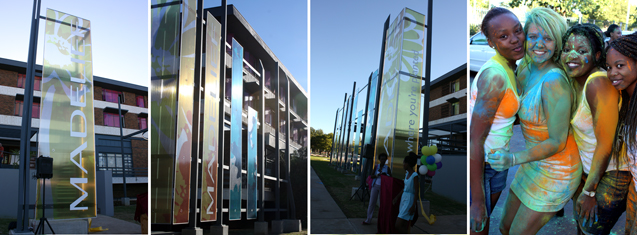Latest News Archive
Please select Category, Year, and then Month to display items
02 January 2025
|
Story Gerda-Marie van Rooyen
|
Photo Supplied
 Leading the research in South Africa is Prof Linus Franke from the Department of Soil, Crop and Climate Sciences.
Leading the research in South Africa is Prof Linus Franke from the Department of Soil, Crop and Climate Sciences.
Scientists are actively pursuing the successful breeding of diploid hybrid potatoes from inbred lines. This is expected to revolutionise potato breeding as it holds the key to rapid genetic progress. It will introduce new varieties for commercialisation through seed. Currently, existing potato variants have a gene that renders self-pollinated seeds infertile.
Prof Linus Franke, an academic in the Department of Soil, Crop and Climate Sciences at the UFS, is leading the research in South Africa. “This technology allows the production of genetically uniform potato seed that is easy to transport and largely disease-free.” He says this differs from conventional breeding whereby only vegetative propagation is possible due to tetraploid varieties in potatoes. It also risks carrying pests and diseases from one generation to the next – leading to the accumulation of pests and diseases with each round of multiplication.
Seed innovation
Prof Franke explains that Solynta BV, a seed company based in the Netherlands that produces potato varieties that can be grown from seed, has included South Africa in their research efforts because it is one of Africa’s largest producers and exporters. Through his academic relationship with Wageningen University and Research, a Dutch institution renowned for its agricultural endeavours and food production, the UFS became involved in researching hybrid potatoes grown from seed.
Diploid seeds containing two sets of chromosomes allow easier gene manipulation to increase predictability and speedier genetic progress. The breeding approach enables the incorporation of tolerance to pests, diseases, abiotic stresses (cold, heat, drought) and other desired genetic traits.
Although Prof Franke is optimistic about this research, he is not blind to disadvantages. “Potato seeds are tiny and have little energy reserves, making it harder to grow potatoes from seed than from tubers.” He says potatoes from seed will take longer to cultivate than tubers, as farmers need to grow plantlets from seeds first, adding six weeks to the growing period. “It is possible that commercial farmers can grow potatoes directly from seed. Alternatively, perhaps more likely, specialised growers will produce tubers of potatoes from seed; these tubers are then sold as seed tubers to other potato farmers, who then continue their normal practices of producing potatoes for the market from tubers.”
Financial benefits
Prof Franke says farmers have reason to get excited. “Seed potatoes will reduce input costs, as varieties with enhanced tolerance to pests and diseases require less pesticides. Planting one hectare of potatoes requires three to four tonnes of potato tubers, but only one 25 g packet of potato seeds.” Since potatoes are a more valuable commodity than maize, this technology might also increase farmers’ income potential.
Madelief Residence bursts into colour
2014-03-12

You’ll be forgiven for thinking that your eyes are deceiving you when turning into the main entrance to the Bloemfontein Campus. Yet, it is still the graceful old lady of a building called Madelief. This 50-year-old female residence has donned a sparkling new ‘dress’, brandishing a trendy new look.
After extensive renovations kicked off during October last year, the long-awaited revamp left residents and Kovsies astonished. The makeover transformed the building into a sparkling gem, glistening in the Free State sun. Luminescent contra-vision windows, a remodelled veranda and a new façade propel this residence into modernity. A unique twist to the use of the façade is that it is reflective during both the day and night. During the daytime, the light reflects towards the residence and during the night it mirrors the entrance of the university. This feature lends an innovative and vibrant impression to the residence’s appearance.
“I’m so happy for my residence. It’s now the hub of attraction – everyone wants to visit and come have a look. Thanks to our Residence Head, the constructors and designers who came up with this concept and Housing and Residence Affairs. We look 50 years younger indeed and more vibrant,” Mamnosi Tshabalala, a senior resident at Madelief, beamed.
In celebration of this new phase of their residence, students plunged into a festival of colour – power paint exploding into rainbows over anyone who came near. Top management that attended the celebration could not escape the excitement. Profs Jansen and Morgan, Dr Wahl, Mr Koetaan and Rudi Buys were swept into the good cheer, snapping photos and making fantastic memories.